The CANT 25 was a single-engine biplane seaplane developed by the aeronautical division of the Italian company Cantieri Riuniti dell’Adriatico (CRDA CANT). It made its maiden flight in 1927 but was only accepted in 1938. With 38 built in an amphibious and catapulted versions, it became the Adriatic shipyard’s first success. The CANT 25 derived from the 18ter and stayed in service until 1943 with the Regia Aeronautica.
Development
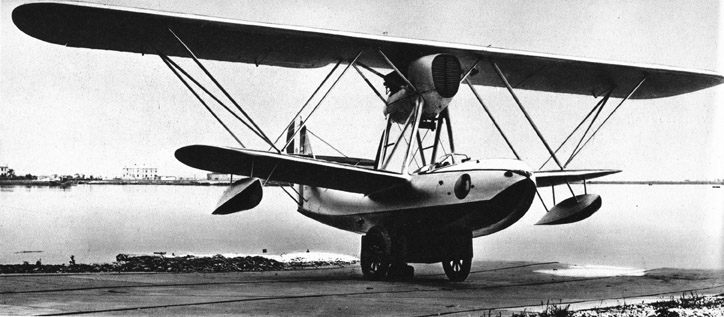
Before the model 25, most successful model of the Cantiere Navale Triestino (CANT), there was the model 18. In 1926, SISA asked the Cosulich group to build an acrobatic seaplane for advanced training. The wooden hulled sesquiplane with top wing suspended engine reached indeed the most extreme acrobatic maneuvers without limitations. Designed by Chief Engineer Raffaele Conflenti as a development of the previous CANT 7, this trainer was also used in civilian colors on newly created commercial routes of Cosulich Brothers over the Adriatic.
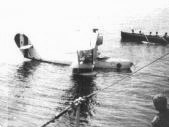 This solid design was declined into a particular version called the CANT 18 ter, a hardened military version with a new 410 HP (302 kW) Fiat A.20 engine. It was not a provate venture but to meet a requirement for a flying boat fighter for the Regia Aeronautica. The latter intended to assigned it to Regia Marina’s ships, either from coastal bases for aerial escort, or to be catapulted, if successful enough. A single prototype was built as demonstrator and tested by the Regia Aeronautica. Returns were very positive, but the lightweight structure, perfect for aerobatics, was no longer able to endure military service with a more powerful engine. At the same time, some cadree of the Regia Marina, present in these tests, asked for folding wings and other modifications which quickly raised the projected weight of the new model.
This solid design was declined into a particular version called the CANT 18 ter, a hardened military version with a new 410 HP (302 kW) Fiat A.20 engine. It was not a provate venture but to meet a requirement for a flying boat fighter for the Regia Aeronautica. The latter intended to assigned it to Regia Marina’s ships, either from coastal bases for aerial escort, or to be catapulted, if successful enough. A single prototype was built as demonstrator and tested by the Regia Aeronautica. Returns were very positive, but the lightweight structure, perfect for aerobatics, was no longer able to endure military service with a more powerful engine. At the same time, some cadree of the Regia Marina, present in these tests, asked for folding wings and other modifications which quickly raised the projected weight of the new model.
After the 18 ter there was allegedly as found in some sources a CANT 19 which tried to better answer this specs, but stayed on paper stage, then a CANT 20 biplane (also to take in a pinch of salt) which further enhanced the design. The CANT 21, 22, 23 were other projects and CANT 24 remained on paper. The CANT-20 was the only advanced prototype between the 18 ter and CANT 25 which helped cementing the design. It was notably developed specifically as a catapulted model, notably to scout for the new Alberto di Giussano class light cruisers. The first flight of this model took place in 1927, but it took many more years until production started with the CANT 25M introduced in 1931.
Italian sources are not that clear about the CANT 20 and rather only points out to the 18 ter alone in the development. It is however always agreed that it was ordered to match the start of the construction of the Condottieri type light cruisers. So in 1927 the Ministry of Aeronautics issued a specification for a new catapult aircraft usable as fighter and for reconnaissance. The competition was answered by Cantiere Navale Triestino with its CANT 18ter seaplane fighter but it would remain at the prototype stage. The competitos were Fiat Aviazione, with a floatplane version of its Fiat C.R.20 land fighter, and Macchi, with the M.41 seaplane, as well as SIAI-Marchetti, which however was excluded from the first round.
In the final round, Macchi lost but returned in 1929 with the M41 bis for another specification, whereas the CR.20 Idro was accepted, but for the defence of naval bases only. CANT won this round as its seaplane was found the most solid design to be catapulted and endure punishing conditions while still keeping the agility of the CANT 18 for aerial combat and air escort. The prototype flew in late 1927, and performed all comparative tests with other competitors in Vigna di Valle. It was accepted for service by the Regia Aeronautica with the contract N°325 for 275,000 lire, approved by decree N°982 of 05/27/1929. The production prototype MM126 prototype, tested on 06/21/30, followed by the MM.159 of 1929 receving detachable wings, MM.160 in 1931 with minor modifications, tested on 03/23 and the MM.189 tested later in 1932 and given, the same FIAT A20 engine. It was tested on 05/28/32.
Design
The CANT 25 was developed in the same line as Macchi floatplanes, which themselves could trace their roots to the 1914 Austrian Lohner L. This was still an all-wooden built hull, carefully shaped and very aerodynamic as well as quite rigid. The hull drew from all the experience of the yard’s naval architects and was rugged as well as fitted with internal bulkheads to provide buoyancy in case of puncture. The internal frame was covered in 3 layers of plywood insulated with impregnated canvas on the bottom, and a single layer on either sides. The fuselage provided the main floatation, completed by two smaller floats under the lower wings. The main difference with the CANT 18 was the nose, beamier and beefer to accomodate a pilot located almost below the main engine struts, with a visor forward of its split windscreen.
The CANT 25 had a central hull configuration with open cockpit featuring a windshield forward front. It had a sesquiplane configuration (larger top wing), connected to each other by eight sturdy struts total, with the lower wing mounted cantilever on the hull and ending with two balancing floats. There was a significant dihedral on the lower set and a cut on the upper set for the propeller.
The engine, was a Fiat A.20 12-cylinder V-engine producing 410 hp (302 kW) on the first variant 25M, mounted in a pusher configuration and placed on the central struts between the two wings. The rear fuselage ended in a tailplane with a single fin and semi-cantilevered stabilizers. The wings were detachable. It was good but not strong enough to be catapulted so CANT worked on a new variant in 1923, a year after the CANT 25M was accepted in service.
Versions
The new variant of the CANT 25 was much reinforced to be catapulted, had shorter and folding wings, not detachable as the 25M, which proved a critical weakness on the latter as a catapulted model. More so, it had a new FIAT 12 A20M improved engine with 30 hp more, which combined with the shorter wings made for a more agile aircraft. The extra power compensated for the added weight. The 25AR was capable of 245 kph top speed. This was already not enough for a fighter, even a sea-borne one. On both, Armament planned consisted of two fixed 7.7mm Vickers machine guns in the nose, manned by the pilot. The wings folded backwards thanks to hinges on the longerons and autonomy was increased.
The Regia Aeronautica ordered, on the behalf of the Regia Marina, 18 of them, to be assigned to each of the first eight Condotierri class cruisers, depending on the space available. Eventually the CANT 25 saw service also on the heavy cruisers of the RM, the three Trento and the four Zara class. By combining the 20 25M ordered and 18AR ordered it comes to a total of 38, albeit some sources points out at 37 unit produced instead. Another Italian sources states 14 of the CANT 25 were made, bringing the total to 34. However the best sources cited below had different views:
8 Cant.25M Series I (NC.250-257 registered with MM.2380/2387), 6 of Cant.25AR Series II (NC.258/263 registered MM.2388/2393), 6 more Cant.25AR Series II (NC.264/269, registered MM.2493/2498), 6 more Cant.25AR (NC.271/276, registered MM.2499/2504) and 6 of Cant.25AR serie IV (NC.278/283, MM.2531/2536) plus the single civilian SISA model (MM.2456). This made for 24 25AR and only 8 CANT 25M, still 33 less prototypes. Grand total with prototypes indeed 37. What is damning as the last series were probably AR version cells mounted on M models, hence the original 20/18 given in some sources. AR stands for Ali Ripiegabili or “Folding Wings”.
CANT 25M: 2-seater, 410 HP Fiat A20 V.12 engine, wings detachable: 8 made
CANT 25AR: 1-seater, reinforced, Fiat A20M 440 hp (330 kW), folded, shorter wings: 24 made
CANT 25 civilian: Isotta Fraschini Asso 200 engine (I-AAKZ), 1 used by the Sisa school, Portorose.

⚙ specifications 25M |
|
| Weight | 1276 empty, 1276 kg MTO |
| Lenght | 8.75 m |
| Wingspan | 12/7.6 m* (Upper/lower wing) |
| Engine | PD Fiat A.20 410 hp |
| Top Speed | 225 km/h @ 4000 m |
| Range | c800 km |
| Ceiling | 5,500 m (25,040 ft) |
| Armament | 2x 7.7 mm Vickers LMGs |
| Crew | 2: Pilot and Observer |
⚙ specifications 25ER |
|
| Wingspan | 10.40 m, wing area 30.9 m2 |
| Engine | PD Fiat A.20M 440 hp |
| Top Speed | 245 km/h, climb rate 26 min 30 sec to 5,000 m |
| Range | 900 km |
| Ceiling | 5,500 m (25,040 ft) |
| Armament | 2x 7.7 mm Vickers LMGs |
| Crew | 1 pilot |
Gallery
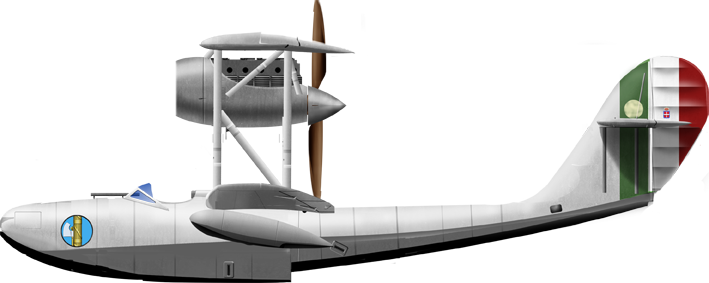
CANT 25 in Regia Aeronautica colors, 1935.
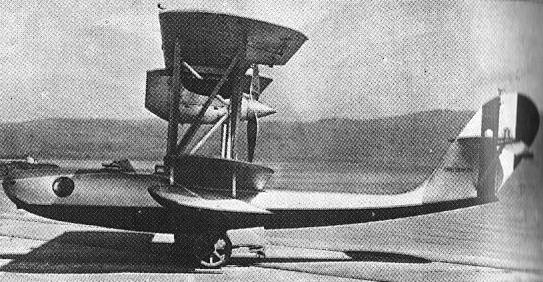
CANT 25M
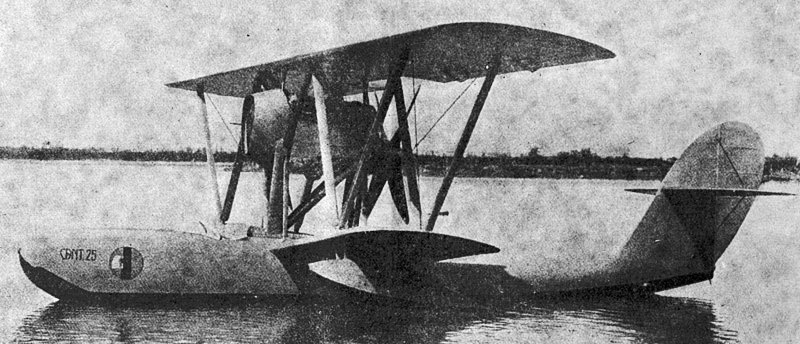
CANT 25 in the review “L’Air” in Jan 1929







The CANT 25 in service
On 08/03/34, test pilot Mario Stoppani performed a demonstration with MM.2493 in front of a Russian delegation, hoping to make some sells.
The CANT 25s were embarked, among others, on the Zara-class heavy cruisers. They were deployed from the first two Trento class cruisers, launched from their bow fixed catapult, lifted up from an hangar under the forecastle, forward of the “A” turret. The below deck hangar was large enough for two CANT 25ER; wings folded. They were manhandled onto the catapult. With two aircraft carried internally and a third one ready on the catapult, both cruisers could create a 300 nm radius reconnaissance bubble around them with six spotters.

They were also active on the Giuseppe Miraglia from 1935 to 1938 to replace its ageing Macchi M.18. It saw action in the Ethiopian War on the war prize cruiser Taranto as scout (two on board). On 21 June 1936, the Royal Giuseppe Miraglia arrived in Zula from Massawa as part of the Ethiopian War. The 141st AO Seaplane Squadron was formed based in Zula (Massawa) on the CANT 25s. Later when replaced by the IMAM Ro.43, the CANT 25s were transferred to the 88th Autonomous Hunting Group at Vigna di Valle Airport and to the seaplane pilot schools as trainers.
From 1937 indeed, the new Imam Ro.43 became the frontline ctapulted model for the Regia Marina and CANT 25ARs were disembarked, merged into the 8° indep. fighter group (162°, 164°, and 166°Sq.) at Vigna di Valle. From 1933, the 25MMs were assigned to the seaplane school at Portorose until 1943. But given their robust construction they managed to have a long life. In august 1938 22 were in service, I November 1939, 17, and on December 1942, there were still 14 active at Portorose seaplane school. They soldiered until the September 1943 capitulation.
Read More/Src
“Catapult Aircraft: Seaplanes That Flew From Ships Without Flight Decks” by Leo Marriot
Taylor, Michael J. H. (1989). Jane’s Encyclopedia of Aviation. London: Studio Editions. p. 269.
CANT. 25bis Idrovolante da addestramento avanzato in Museo della cantieristica.
Evangelisti, G. Gente dell’aria – Ed. Olimpia
Garello, G., D. Zorini. Le officine aeronautiche CANT. 1923/1945. Ed. Ufficio storico AMI.
Giorgio Dorati, C.N.T. Cant.25, su giemmesesto.org, Gruppo Modellistico Sestese
CANT. 25bis Idrovolante da addestramento avanzato, in Museo della cantieristica
G.Garello/D.Zorini – Le Officine aeronautiche CANT. 1923/1945 – Ed.Ufficio Storico AMI
A.Curami/G.Gambarini – Catalogo delle Matricole Militari della Regia Aeronautica. 1923/1943.
Links
giemmesesto.org
aerei-italiani.net
archeologiaindustriale.it
electric wirings scheme
structure
secretprojects.co.uk
marina.difesa.it
airwar.ru
en.wikipedia.org

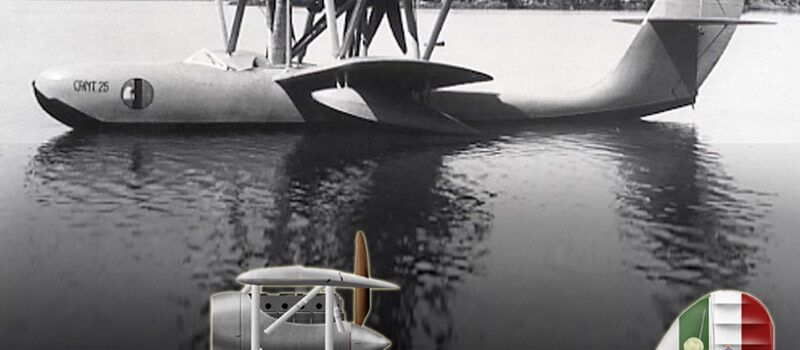
 Latest Facebook Entry -
Latest Facebook Entry -  X(Tweeter) Naval Encyclopedia's deck archive
X(Tweeter) Naval Encyclopedia's deck archive Instagram (@navalencyc)
Instagram (@navalencyc)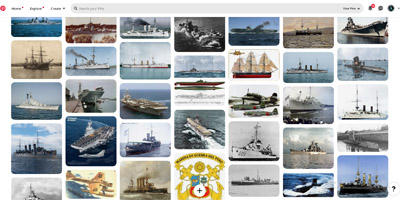


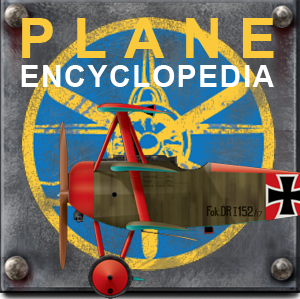
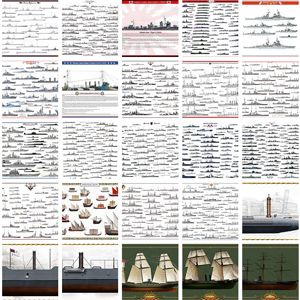
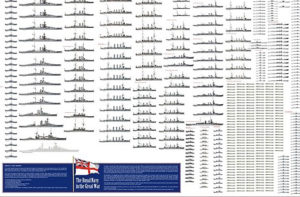
 French Navy
French Navy Royal Navy
Royal Navy Russian Navy
Russian Navy Armada Espanola
Armada Espanola Austrian Navy
Austrian Navy K.u.K. Kriegsmarine
K.u.K. Kriegsmarine Dansk Marine
Dansk Marine Nautiko Hellenon
Nautiko Hellenon Koninklije Marine 1870
Koninklije Marine 1870 Marinha do Brasil
Marinha do Brasil Osmanlı Donanması
Osmanlı Donanması Marina Do Peru
Marina Do Peru Marinha do Portugal
Marinha do Portugal Regia Marina 1870
Regia Marina 1870 Nihhon Kaigun 1870
Nihhon Kaigun 1870 Preußische Marine 1870
Preußische Marine 1870 Russkiy Flot 1870
Russkiy Flot 1870 Svenska marinen
Svenska marinen Søværnet
Søværnet Union Navy
Union Navy Confederate Navy
Confederate Navy Armada de Argentina
Armada de Argentina Imperial Chinese Navy
Imperial Chinese Navy Marinha do Portugal
Marinha do Portugal Mexico
Mexico Kaiserliche Marine
Kaiserliche Marine 1898 US Navy
1898 US Navy Sovietskiy Flot
Sovietskiy Flot Royal Canadian Navy
Royal Canadian Navy Royal Australian Navy
Royal Australian Navy RNZN Fleet
RNZN Fleet Chinese Navy 1937
Chinese Navy 1937 Kriegsmarine
Kriegsmarine Chilean Navy
Chilean Navy Danish Navy
Danish Navy Finnish Navy
Finnish Navy Hellenic Navy
Hellenic Navy Polish Navy
Polish Navy Romanian Navy
Romanian Navy Turkish Navy
Turkish Navy Royal Yugoslav Navy
Royal Yugoslav Navy Royal Thai Navy
Royal Thai Navy Minor Navies
Minor Navies Albania
Albania Austria
Austria Belgium
Belgium Columbia
Columbia Costa Rica
Costa Rica Cuba
Cuba Czechoslovakia
Czechoslovakia Dominican Republic
Dominican Republic Haiti
Haiti Hungary
Hungary Honduras
Honduras Estonia
Estonia Iceland
Iceland Eire
Eire Equador
Equador Iran
Iran Iraq
Iraq Latvia
Latvia Liberia
Liberia Lithuania
Lithuania Mandchukuo
Mandchukuo Morocco
Morocco Nicaragua
Nicaragua Persia
Persia San Salvador
San Salvador Sarawak
Sarawak Uruguay
Uruguay Venezuela
Venezuela Zanzibar
Zanzibar Warsaw Pact Navies
Warsaw Pact Navies Bulgaria
Bulgaria Hungary
Hungary

 Bundesmarine
Bundesmarine Dutch Navy
Dutch Navy Hellenic Navy
Hellenic Navy Marina Militare
Marina Militare Yugoslav Navy
Yugoslav Navy Chinese Navy
Chinese Navy Indian Navy
Indian Navy Indonesian Navy
Indonesian Navy JMSDF
JMSDF North Korean Navy
North Korean Navy Pakistani Navy
Pakistani Navy Philippines Navy
Philippines Navy ROKN
ROKN Rep. of Singapore Navy
Rep. of Singapore Navy Taiwanese Navy
Taiwanese Navy IDF Navy
IDF Navy Saudi Navy
Saudi Navy Royal New Zealand Navy
Royal New Zealand Navy Egyptian Navy
Egyptian Navy South African Navy
South African Navy






























 Ukrainian Navy
Ukrainian Navy dbodesign
dbodesign